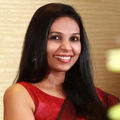UK likely to continue to trade heavily with closest neighbours: UKICE

Insights
- The UK continues its trend of weaker growth in goods trade, the Q4 2023 trade tracker by UK in a Changing Europe found.
- Goods imports continued its 2023 trend of weakness and goods exports have seen consistently poor levels compared to 2019.
- A dramatic shift in trade ties is unlikely and the UK is likely to continue to trade heavily with closest neighbours.
A comparison of current trade data with 2019 data showed while goods imports continued its 2023 trend of weakness, it has not always been the case that they have consistently underperformed. They performed well in 2022 compared to 2019, but have since then fallen back to below 2019 levels.
Goods exports have seen consistently poor levels compared to 2019. The UK’s trade deficit continues to grow as goods exports have fallen more than import goods, highlighting a widening gap in trade goods balance.
Trade openness, a measure calculated by taking exports and imports and dividing them by real gross domestic product (GDP), reflects a country’s level of integration into the global economy.
Since the introduction of the European Union (EU)-UK Trade and Cooperation Agreement (TCA), the UK has had the lowest trade openness in the G7. While the UK has been on a downward trend since the final two quarters of 2022, so has most of the G7. There is a clear trend across most G7 countries of a peak in Q4 2022 before a fall in the first three quarters in 2023.
The share of total UK trade that involves the EU has continued to rise. In Q3 2023, it increased by 0.5 per cent from the previous quarter to 53.3 per cent. Compared to Q3 2022, it has increased by 2.1 per cent.
The turn towards non-EU trade that occurred immediately after the introduction of the TCA in January 2021 looks to have only been a momentary blip, UKICE said in a release.
EU trade as a share of total trade is at levels the UK hasn’t seen since before the referendum.
The growing share of EU trade is further evidence that forming new partnerships and signing new free trade agreements with geographically distant partners will not quickly supplant relationships with closer partners, UKICE noted.
At present UK trade of goods with India is dwarfed by trade with China, the United States, and especially the EU. Therefore, even if the India trade deal being negotiated at present were to double trade with India, it still would not dramatically change the UK’s trade patterns, UKICE observed.
Notably, the trade deals the United Kingdom has signed so far—with Australia and New Zealand—are absent from top trade partners, both making up less than 1 per cent.
While trade with China accounts for over 8 per cent of total trade, an increase in trade relations looks politically unlikely, in particular as overdependence on China is seen as a potential national security risk.
Therefore, a dramatic shift in the United Kingdom’s trade relationships is unlikely and it is likely to continue to trade heavily with its closest neighbours, UKICE added.
Fibre2Fashion News Desk (DS)
































-Ltd..jpg?tr=w-120,h-60,c-at_max,cm-pad_resize,bg-ffffff)





.jpg?tr=w-120,h-60,c-at_max,cm-pad_resize,bg-ffffff)
.jpg?tr=w-120,h-60,c-at_max,cm-pad_resize,bg-ffffff)






